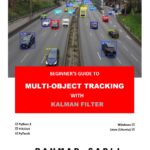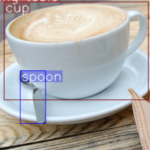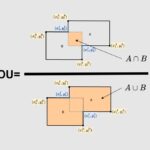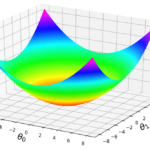All Blogs

Non-Maximum Suppression in PyTorch: How to Select the Correct Bounding Box
In certain scenarios, object detection algorithms such as YOLO, Faster R-CNN, and SSD may generate redundant and overlapping bounding boxes. Therefore, to ensure accurate detection results and retain only the most confident ones, it is crucial to implement a mechanism capable of identifying and selecting the most appropriate bounding boxes while discarding the overlapping ones. To achieve this objective, we can use a method called Non-Maximum Suppression (NMS), a post-processing… Read article
eBook: Beginner’s Guide to Multi-Object Tracking with Kalman Filter
Unlock the fascinating world of Multi-Object Tracking (MOT) with my comprehensive, practical book, "Beginner's Guide to Multi-Object Tracking with Kalman Filter". Whether you're a student, a computer vision practitioner, a robotics engineer, or simply someone fascinated by the technology behind tracking multiple objects, this book serves as your gateway to mastering the art of tracking multiple objects in real-world scenarios. Read article
A Simple Guide to Making Transparent Overlay Labels on Object Detection
If you wish to add transparent overlay labels to your detected bounding boxes without covering the underlying image, using transparent text overlay can be a great solution. A transparent text overlay is a text that is overlaid on top of an image with a partially transparent background, allowing the underlying image to show through. To create transparent overlay labels, we can use a technique known as alpha blending. Alpha blending… Read article
COCO Dataset: A Step-by-Step Guide to Loading and Visualizing with Custom Code
Learn the step-by-step process to load and visualize the COCO dataset with custom code. Discover how to prepare the COCO object detection dataset to improve knowledge in object detection algorithm. Read article
Intersection over Union (IoU): A comprehensive guide
Today, we will cover IoU (Intersection over Union) and how to implement it in Python. If you are new to the field of object detection, understanding of IoU and knowing how to code it can help you gain a deeper understanding of object detection algorithms. This is because IoU is one of key metrics used to evaluate the performance of object detection models and is used to measure the similarity… Read article
How to Create a Custom Dataset Class in PyTorch
In this tutorial, we will learn how to create a custom dataset class by inheriting from the Pytorch abstract class torch.utils.data.Dataset. We will use the MNIST handwritten dataset as an example to demonstrate how to build and use a custom dataset in Pytorch. Read article
Guide to Gradient Descent Algorithm: A Comprehensive implementation in Python
Let's learn about one of important topics in the field of Machine learning, a very-well-known algorithm, Gradient descent. Gradient descent is a widely-used optimization algorithm that optimizes the parameters of a Machine learning model by minimizing the cost function. Read article
Introduction to Artificial Neural Networks (ANNs)
Artificial Neural Networks (ANNs), inspired by the human brain system, are based on a collection of units of neurons that are connected one to another to process and send information. A very basic or a simplest neural network composes of only a single neuron, some inputs and a bias b as illustrated in the following […] Read article
Sentiment Analysis Using Keras Embedding Layer in TensorFlow 2.0
The sentiment analysis is a process of gaining an understanding of the people's or consumers' emotions or opinions about a product, service, person, or idea. By understanding consumers' opinions, producers can enhance the quality of their products or services to meet the needs of their customers. Read article
